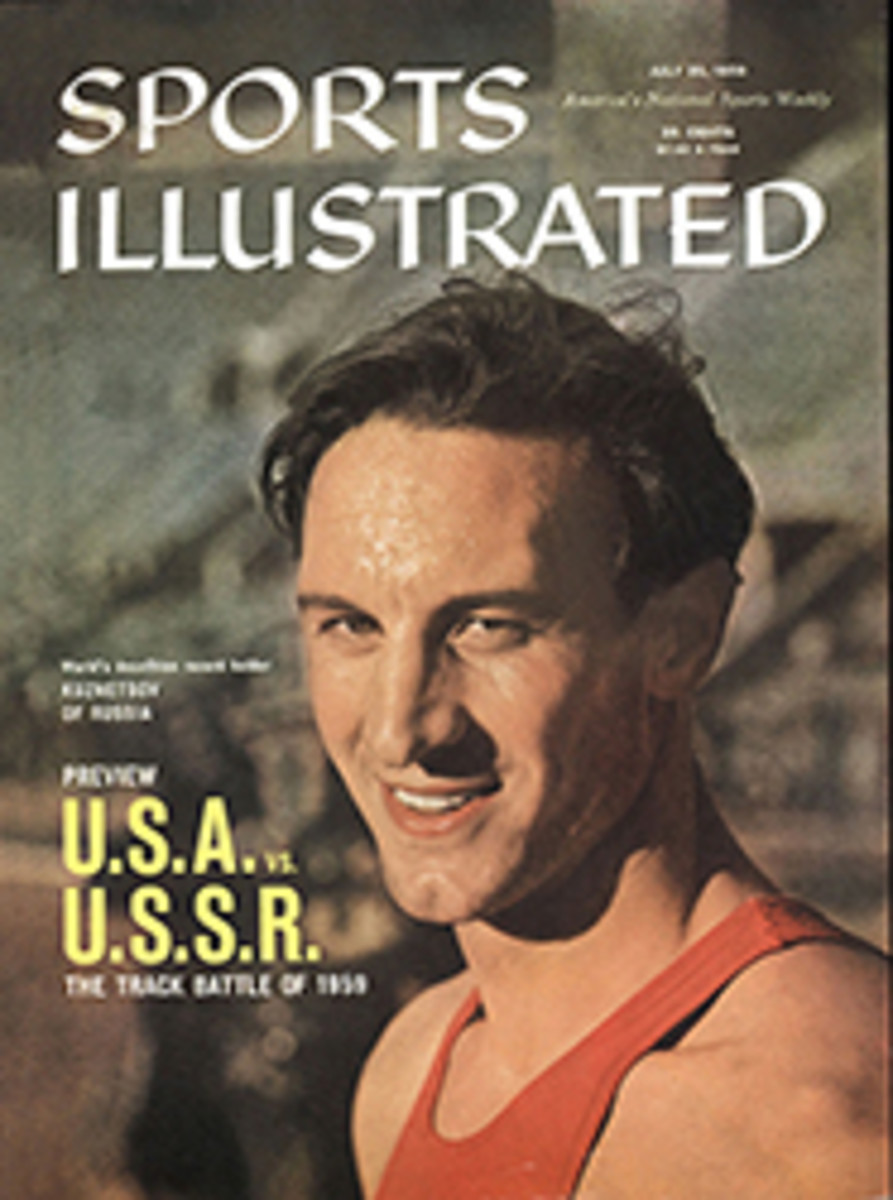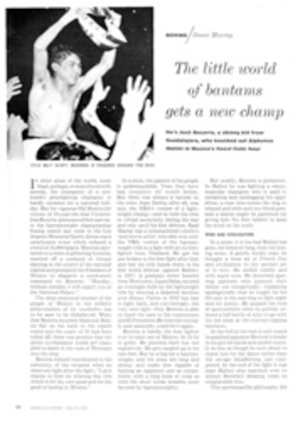
A caper within the rules
Every big ocean race is, in a sense, a test of the ocean racing handicap rule, "the equalizer," as it has been called. There are several handicap rules—the Transpacific, the Off-Soundings, etc.—but the rule is set forth by the Cruising Club of America and governs the big East Coast races: on even years the Bermuda and on odd years the Annapolis-Newport. This being the year for the run from Annapolis, the wharves of the old colonial city were filled with racing skippers and talk of the rule a fortnight ago. The talk mounted considerably when Designer Ray Hunt, the unrepentant bad boy of sailing and a genius at his trade, showed up with a scary-looking Harrier. Harrier in 1957 ran as a sloop and won the Annapolis-Newport, but the Harrier of 1959 had jettisoned her modest mainsail and jib for a huge undignified main and no jib at all. A cat rig, no less. Minus headsails, Harrier, much to the annoyance of Hunt's fellow skippers, rated way, way down in the fleet of 71 starters.
Hunt said he was looking for a simple, two-man cruising rig that eliminated all the bother of head-sail changes. If, incidentally, Harrier went well enough to win under her new low rating, all well and good. Luckily for ocean racing men, Harrier did not go well as a catboat (14th in Class C), or the whole Atlantic fleet would have had to rerig to beat her.
The boat that did do well under the rule was Irving Pratt's Caper. Three days and three hours after the start, Caper slid in under Castle Hill light at Newport ahead of two be-medaled old campaigners: Nimrod V (ex-Blitzen) and Carina. When the handicaps for the whole fleet were figured, Caper, Nimrod and Carina were win, place and show. For the first time in memory, Class A had swept a big East Coast race.
Separating the effect of weather from the effect of the rule, the Class B and Class C fleets were hurt when the wind died and the tide changed the mouth of the Chesapeake. By then Class A already had turned the corner at Chesapeake lightship and was well out in the Atlantic, riding southerlies that carried them all the way to Newport. However, the smaller boats still had two and a half days to catch Class A. Only the most smartly sailed three in Class A managed to stay far enough ahead to nullify the eight-to 12-hour advantage of Southern Star II, Class C winner and fourth in the fleet.
TESTING THE RULE
Deciding the winner among Caper, Nimrod and Carina was a good test of the rule. The three are within a foot and a half of each other, but they represent three very different concepts. Nimrod, built by Sparkman & Stephens in 1938, is a deep-draft centerboarder with a big foretriangle and a hull husky enough forward to hold up under her big headsails. Under the rule Nimrod gives Caper an hour. Carina was designed for Richard Nye by Phil Rhodes in 1955. She was the flowering of the shallow-draft centerboard type that took advantage of the credit given under the rule for wide beam. She has approximately three hours' advantage on Caper. Pratt's boat, designed by Rhodes two years ago, is a narrow deep-keel job.
In this year's Annapolis-Newport, old Nimrod hung onto Caper all the way. Art Shuman and Ed Disharoon who chartered Nimrod for the race sailed her well. It was obvious to anyone aboard Nimrod, as I was, that only a break could have put Nimrod first even though Caper has a shorter water line and a smaller foretriangle and ought to sail a bit slower. Nimrod was not performing up to design: her sails were just average while Caper's were excellent. There is no compensation in the rule for a boat that doesn't have sails delivering maximum possible horsepower.
As for Carina, had Skipper Nye got her around the Chesapeake light reasonably close to Caper or Nimrod, she would have finished ahead of one or both on handicap, since a down-wind course favors the boat with the most handicap advantage. As it was, Carina hit the wrong slants of wind in the bay and came out several hours behind her two rivals. So, having got off to a bad start, she lost under the rule, and it would appear that in Carina's case, as in Nimrod's, the rule was working.
The fact that the rule proved out was a satisfaction to the winning skipper on a par with his satisfaction at winning the race. An investment adviser with a flair for finding mathematical relationships, Irving Pratt greatly admires and is greatly fascinated by the rule. Moreover, as chairman of the committee that makes changes in the rule, he has had quite a bit to do with its present form.
"Pratt sits home and works on the rule," said Dick Nye, "when all his friends are out playing bridge. That's why he knows so much about it."
BUILT TO THE RULE
At any rate, when Pratt asked Phil Rhodes to design Caper, he said he wanted her built "pretty much to the rule." By this he meant that he wanted Caper to take only small penalties and small credits under the rule. In fact, Pratt leaned toward penalties and a fast boat, rather than credits and a slower hull.
"I like to cross the line first, and let the others do the arithmetic," Pratt has said, but it is a good bet that long hours of poring over ocean-racing results convinced him that a boat which took a few penalties for speed could beat out the handicap advantage on the wide-beam center-boarders that have been all the rage. Phil Rhodes's work on Caper is proving the thesis out. This is all to the good. An owner should be able to pick either a centerboard design or a keel design with equal chance of having a winner. This is an ideal toward which Pratt's committee has been working.
Is the committee now satisfied with the rule? Well, no, not exactly.
"With the help of members like Arthur Homer [president of Bethlehem Steel Corp. and skipper of Salmagal II] we're trying to revise the rule," said Pratt.
Committee Chairman Pratt would rather not say just what changes are contemplated, but indications from other sources are that at least two changes are up for consideration. One is an increased penalty for fore-triangles. Right now headsails are not penalized in ratio to the speed which they give a boat. However, Hunt's experiment with Harrier, some have said—and Hunt has denied—was just to show the committee what could happen if the foretriangle penalty got too heavy. People would give up having one.
Another problem up for consideration is the question of unpenalized ballast. Since ballast is a measure of a boat's ability to carry sail, the more ballast, naturally, the more penalty. However, there are ways of making weight not measured as ballast under the rule act as ballast. One dodge is over-heavy planking below the water line. Others are heavy metal cabin floors, thick steel water tanks and extra heavy anchor chain. The committee, consequently, has been working on other ways of measuring sail-carrying ability. One way that the committee has been testing involves inclining a boat a few degrees mechanically and measuring her resistance to being tipped. This, it is said, would take into account all indirect as well as all obvious ballast. Whether this theory works in practice or not, only the committee knows. But one thing is sure: good as it is, the rule will be changed and, if the past is any indicator, the changes will make the old equalizer work better.
PHOTO
SAILS DRAWING BEAUTIFULLY, THE WINNING BOAT CROSSES THE FINISH LINE
PHOTO
OWNER PRATT GIVES VICTORY GRIN

